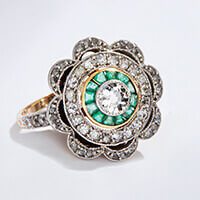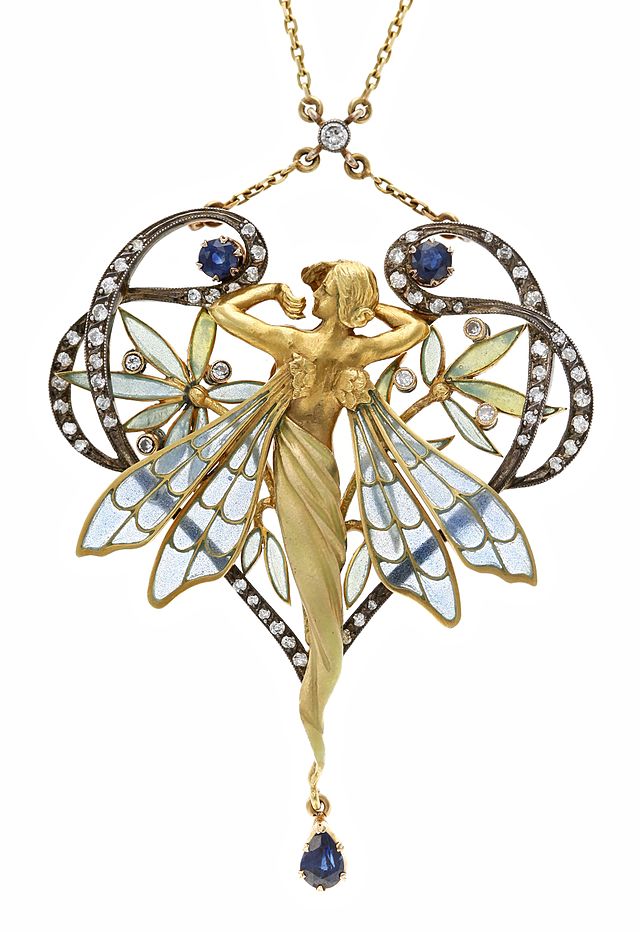-

Your Shopping Bag is empty
Plique-à-Jour
A French term that translates (as nearly as can be determined) to “letting in the daylight” and defines a type of transparent enamel that has no backing. Similar to a stained glass window, the design has a metal outline filled with various coloured transparent, glass-like enamels.
First discovered in the 15th century by Benvenuto Cellini, plique-à-jour was rediscovered in France circa 1900 and soared to new heights during the Art Nouveau period. Similar to cloisonné, plique-à-jour is composed of metal cloisons or cells with a temporary backing. Rene Lalique created his unrivaled plique-à-jour jewels by hand piercing the cloisons out of gold sheet and backing them with copper to create a solid framework for this delicate enamel. The copper backing was later removed through the use of an acid bath.
Plique-à-jour provides a natural translucency, similar to that found in nature, which makes it ideal for rendering leaves, flowers, insect wings and other gossamer illusions. This technique is especially suitable for pendants and earrings, highlighting and featuring the play-of-color provided by light passing through the enamel. Undoubtedly, plique-à-jour was a critical innovation in developing the Art Nouveau aesthetic in jewelley.
Back to Glossary


 Free Worldwide Delivery
Free Worldwide Delivery View All
View All
 Diamond
Diamond
 Sapphire
Sapphire
 Emerald
Emerald
 Ruby
Ruby





